Social media can be daunting. It seems there’s constantly new social media platforms popping up, and once you’ve seemed to master one, it’s no longer popular and you have to learn something new all over again. Plus, some platforms are better for different business types, and it can be a pain to figure out the secret recipe to best suit your small business.
Define Your Target Audience
You can’t market to or engage with someone if you don’t know who you’re talking to or who wants to hear your message. Ask yourself the following questions:
- What age group am I trying to reach? Boomers, Gen X, Millennials, Gen Z, etc.?
- What is my audience’s income level or occupation?
- What are my target market’s common values?
- Where are they located?
- What is their gender?
This is a great start, but you have to remember these are individuals with more personal characteristics, such as behavior, attitude, lifestyle, values and personality. Thinking about these aspects will help you further define your ideal customer. Ask yourself follow-up questions such as:
- Is my product/service affordable for my target audience?
- What challenge does my product/service solve?
- Will my products/services be beneficial for my audience? Will they find a need for it?
- Are they easy to reach? Will I be able to get my message across to them?
- Are there enough individuals that fit my criteria to support my business?
- Am I fully aware of what drives my market’s ability to make decisions.
It’s important to remember that you can have more than one target audience. For each niche, you may want to examine your marketing message. If you’re effectively able to reach multiple niches with the same message, you may not have broken your market down enough. On the flipside, if you find that only 25 people fit into your criteria, evaluate it. It’s all about finding that perfect balance.
Determine Your Social Media Goals
Like anything else, being on social media needs an end goal. It’s a good idea to do a social audit every once in a while to locate any gaps in your present marketing plan. What is your end goal? Is it to:
- Build customer-to-brand loyalty and improve customer service
- Introduce your customer base to new services, products, or discounts/incentives
- Create and use a given platform for client feedback
- Increase website traffic
- Grow your customer base
Instead of defining goals based on the number of followers you want to reach, consider the channels that will benefit you in expanding engagement with your fans. The number of fans you have doesn’t measure business success; it’s a vanity metric. If you have 10,000 followers on your LinkedIn profile, but only 130 of them ever engage with your content, you actually have 130 followers.
Choose the Right Social Media Platform
Alright, at this point, you’ve been thinking about who you want to reach and why you want to reach them. Now we can talk about how to reach them… kind of. Before we can dig into different sites and what they offer, you need to establish your objectives. The objectives you choose will need to correspond with the different metrics you use to measure your success later on. When it comes to measuring your ROI, some of the areas to look at may include clicks, followers, retweets/shares, check-in’s, views and more. Without objectives and associated metrics, you won’t have a clue how effective your marketing strategy really is. What do you actually wish to achieve?
- Brand Awareness: how well a potential customer can recognize a brand and associate it with a certain company’s products/services
- Engagement: the use of strategic, resourceful content to engage people and create meaningful interactions over time
- Community Building: a strategy to engage an audience in an active, non-intrusive prospect and customer conversation
- Lead Generation: the process of stimulating and grabbing interest in a product/service for the purpose of developing a sales pipeline
Popular Social Media Platforms in 2021
As promised, we can finally dig into different platforms, what they do and how they could (or couldn’t) be useful to your business.
Number of Users: 2.7 billion
Key Demographics: 25-34 year olds make up 31.6 percent of the users. | 56.8 percent of all users are female or identify as such.
Stand-Out Statistics: 60 percent of all social media users are on Facebook. | There are 80 million small business Facebook pages.
About: Facebook is the most popular social media platform worldwide, and it is one of the best social media websites to market any business. On this platform, you can specifically target your audience by age, employment, interests and other characteristics, making it a very dynamic and personalized platform to advertise and build brand awareness. There are closed groups that create community and tend to have a high level of engagement, and the Messenger app is a great tool for communication that stays out of the public discourse.
Number of Users: 1.16 billion
Key Demographics: 71 percent of users are under the age of 35. | 51 percent of all users are female or identify as such.
Stand-Out Statistics: 62 percent of users log in at least once a day. | There are 130 million monthly clicks on commercial or advertising posts. | 14 percent of U.S. adults claim they have never heard of this platform. | 500 million accounts use Instagram stories every day.
About: Instagram is owned by Facebook, and they have made huge strides in the social media world. It is a visual-heavy platform that allows users to publish photos and short videos that stick with audiences. According to recent studies, people remember 80 percent of what they see and only 20 percent of what they read. As a business owner, one of the best things about this platform is the ability to grow your follower base organically through storytelling, hashtags and great images/videos. If you want to continue that growth, you have the ability to create ads just like on Facebook.
Number of Users: 722 million
Key Demographics: 59.9 percent of users are between 25 and 34 years old. | 57 percent of all users are male or identify as such.
Stand-Out Statistics: 76 percent of users are located outside the U.S. | There are 55 job applications submitted every second. | 50 percent of people with a college degree or higher are on this platform. | 40 million people use LinkedIn to search for jobs each week.
About: LinkedIn is sort of like a rolodex of connections sharing thoughts, articles, job postings and more. It’s the most old fashioned of the listed platforms, and it’s main focus is networking. Having your business engage on LinkedIn is a great way for other professionals to find you and get a glimpse of who you are as a business owner. This platform also has great SEO similar to your website or Facebook so it’s important to keep your descriptions and information as current as possible.
Tiktok
Number of Users: 689 million
Key Demographics: 62 percent of users are between 16 and 29 years old. | 57 percent of all users are male or identify as such.
Stand-Out Statistics: The average time spent on the app per day is 52 minutes. | 90 percent of all Tiktok users access the app on a daily basis. | More than one billion videos were viewed every day in the last year.
About: Tiktok is the newcomer of this list, but with the surge of downloads during COVID-19 lockdown, it is certainly here to stay. Tiktok claims their mission is “to capture and present the world’s creativity, knowledge and precious life moments, directly from the mobile phone. Tiktok enables everyone to be a creator, and encourages users to share their passion and creative expression through their videos.” What really makes them stand out above the competition is that it’s more of an entertainment platform instead of a lifestyle platform. There’s less mindless scrolling and more engagement than the giants like Facebook and Instagram. There’s no pressure to be perfect, but rather be authentic.
If you still don’t know what social media platform is right for you and your business, reach out to us. Our dedicated marketing team at Rooted Web is here to help navigate these waters and see you succeed. Let’s chat!
Like what you're reading?
Subscribe to the blog for insightful posts delivered via email. We respect your privacy and won't spam your inbox.

